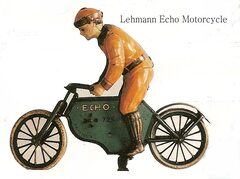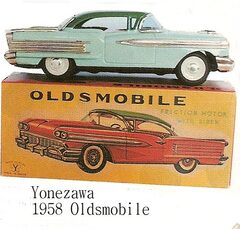The Childrens Playground
 When We Were Kids.
When We Were Kids.
Long before the computer age kids played with a range of toys from both local and imported toy manufacturers.The early years saw kids copying parents in the playground with toys such as Pedal cars, model cars, washing machines etc. TV not only changed who they imitated but also influenced what parents bought the kids for Xmas, Children wanted to be Batman, Roy Rogers or their sports hero.
Batman

Batman, originally referred to as "the Bat-Man" and still referred to at times as "the Batman", is a fictional character, a comic book superhero co-created by artist Bob Kane and writer Bill Finger(although only Kane receives official credit), appearing in publications by DC Comics The character first appeared in Detective Comics #27 in May 1939.
The Batman franchise included suits, models and as seen below Pedal cars

Roy Rogers
"Soon after The Roy Rogers Show went on the air, Roy's likeness began appearing on Post cereal boxes, advertising such prizes as cardboard reproductions of the Double-R Bar and lapel pins with portraits of Trigger and Buttermilk. Roy's endorsements began the year after he was crowned King of the Cowboys in 1943. He lent his name to every kind of child's toy imaginable, including cap guns and quick draw holsters, child-size guitars, rings, badges, lassos, and musical hobby horses."
*Edited excerpts from "Happy Trails, Our Life Story"


Tin Toys
Lithographed tin was introduced to toys in the 1880's whereby various colours and detail were printed on flat sheets of metal by a lithographic press; the various pieces were then formed by dies and assembled with small tabs. The sheet metal for tin toys is made of steel that is rolled into thin flat sheets or plates. First toy usage for tin plate in the United States dates back to 1895.

Germany dominated the market up to the outbreak of World War II. When peace returned, toy makers everywhere had a great deal of lost ground to recover. However, once the toy industry was back in full production, Japan assumed the lead and began to control the market with the addition of many new novelties. Not just wind-up and friction driven, some Japanese tin toys were powered by batteries and able to provide flashing lights and sounds. In the 50's and early 60's, the Japanese had flooded the market with many appealingly designed tin toys and a large percentage of them were aimed at the USA with items familiar to Americans. But despite the initial resurgence of tin toy popularity in the post-war era, tin toy manufacturing was faced with steadily increasing difficulties. They included changing consumer demands, new safety regulations and competition from plastic toy makers. By the 70's, Japan had reduced the tin toy output so dramatically that many factories had ceased production altogether.
Mr Potato Head
Mr. Potato Head is an American toy consisting of a plastic model of a potato which can be decorated with a variety of attachable plastic parts such as ears and eyes to make a face. The toy was invented and developed by George Lerner in 1949, and first manufactured and distributed by Hasbro in 1952.
Mr. Potato Head enjoys the distinction of being the first toy advertised on television and has remained in production since its debut.
From You Tube is Mr Potato Head when he was a real Potato!
PUSH 'N' GO


The Great Out Doors
Toy Manufacturers also took into consideration Aussies love of Out Doors, supplying our Kids with things to do outside



The Baby Boomers
Pedalmania looks at the 50's
The 1950's Could be considered as the boom time for toys, however by the mid fifties, manufacturers had to compete with Japanese toys which were rapidly invading countries around the Globe, the advent of the television was soon used as a tool to capture the parents dollar.
Barbie has continued to evolve with wardrobe additions, dream houses, sisters, boyfriends and convertibles to this day.
Another toy to stand the test of time is the humble Yo-Yo. The earliest surviving yo-yo dates to 500 BC

(A woman playing with an early form of the yo-yo, called a "Jou Jou," from a French fashion journal c. 1791)
The yo-yo would remain in relative obscurity until 1928 when a Filipino American named Pedro Flores opened the Yo-yo Manufacturing Company Shortly thereafter (ca. 1929), an entrepreneur named Donald Duncan recognized the potential of this new fad and purchased the Flores Yo-yo Corporation and all its assets, including the Flores name, which was transferred to the new company in 1932. Duncan's first yo-yo thereafter was the Duncan O-BOY.

A competitor in
the 2004 US National Yo-Yo Competition in Chico, Calif.
Today, Duncan continues to produce yo-yos along with several competing
companies. Some companies focus on traditional yo-yos, while others
have created innovative models with clutch systems and ball bearings to
improve performance. Yo-yo competitions and events are held across the
world, and it seems every few years another wave of yo-yo mania sweeps
the nation.
